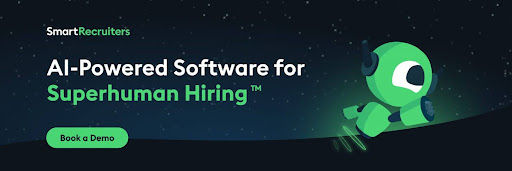Talent acquisition (TA) or recruiting teams most often report to human resources (HR) or people departments. But that doesn’t mean they have similar needs when it comes to the systems that help get work done. Back-office human resource information systems (HRIS) that cover payroll, benefits administration, and performance management serve a different purpose than front-office applicant tracking systems (ATS) that respond to thousands of candidates seeking employment.
A systems approach that bundles talent acquisition and human resources with HRIS recruitment modules can have negative effects on your company’s ability to efficiently hire top talent. All systems are not created equal: what looks like good value on the surface can have these hidden costs when compared to a best-of-breed ATS.
- Poor candidate experience
- Higher recruitment spending
- Low recruitment team efficiency
- High implementation and maintenance costs
- Innovation stagnation
1. Poor candidate experience
HRIS recruitment modules tend to offer such poor candidate experiences that posting complaints on social media is a common practice. Candidates complain about:
- Having to create separate log-ins for each company when encountering multiple companies using the same HRIS
- Not being able to keep track of multiple passwords for every company (even password management tools have trouble with subdomains)
- Poor resume/CV parsing that forces them to re-enter information already included in their resume/CV
- Drop-downs not inclusive of all options, forcing them to post incorrect information
- The amount of time it takes to complete applications (commonly 15 minutes or more, when it should take less than five)
- Negative perceptions of the company due to onerous job applications.
Some candidates simply refuse to apply when they encounter jobs hosted on HRIS ATS modules that have given them trouble in the past. For highly skilled talent who are already employed, long application times are a particular deterrent.
The poor candidate experience results in several outcomes for employers using HRIS recruiting modules:
- Lower-than-average application volume
- Inefficient advertising spending due to low conversion
- Negative impacts on the employer brand, including candidate resentment
According to ERE’s Candidate Experience Benchmark Research in 2024,
“Candidate frustration is higher than ever, and candidate resentment is still trending higher globally.” Candidates who report resentment “aren’t willing to apply again, refer others, be brand advocates, or even be customers for B2C companies.”
2. Higher recruitment spending
Whatever cost savings might be derived from bundling HRIS modules, they are quickly negated by increased advertising and the cost of overlay systems.
Advertising
The primary outcome of the above-mentioned poor candidate experience is that companies need to spend more on advertising to attract an adequate number of qualified candidates.
If two nearly identical jobs are advertised, which one is likely to receive more applications: one with a 3-minute application or one with a 15-minute application requiring login creation?
The company with fewer applications has a smaller talent pool to draw from and may need to compensate by 1) spending more money or 2) keeping the job open longer.
Candidates who are patient enough to sit and fight with forms might not be the kind of innovators who can move fast and develop new solutions that lead your company into the future.
Additional systems
Some companies using HRIS recruitment modules have taken the approach of purchasing an “overlay” solution that streamlines the candidate experience. These systems use a combination of AI and automation to assist candidates in applying, scheduling interviews, and communicating via text throughout the recruitment process.
A discounted HRIS recruitment module suddenly becomes more expensive if another system is required to do what a best-of-breed talent acquisition platform could achieve with native interview scheduling and candidate texting features.
3. Recruitment team efficiency and satisfaction
In a time when companies are looking to become leaner and improve efficiency, HRIS recruitment modules may set talent acquisition teams back. Streamlined systems that automate key steps in the hiring process empower recruiters to spend more time building relationships with hiring managers and candidates, which can positively impact the quality of hire and reduce turnover.
- 70% of employees say they don’t have the technology to support day-to-day work.
Streamlined, easy-to-use systems also have the ability to improve recruiter efficiency so that they can manage more requisitions.
- One SmartRecruiters customer found that recruiters were able to handle 26% more requisitions compared to the previous system.
Ease of use drives adoption and efficiency
Hiring teams are more likely to adopt an easy-to-use system than one that is clunky and hard to understand. SmartRecruiters has been rolled out with minimal training to global hiring teams at large organizations, and the software is available in 41 languages so that most local hiring needs can be accommodated.
JYSK, a global retailer with stores in 52 countries, said, “It was really important that our new system would be easy to use for hiring managers in all our stores across many countries. We rolled out SmartRecruiters with a simple mobile training and optional webinars.” The ease of use for candidates and hiring managers alike combined with automation helped the team reduce time-to-fill from 56 days to 20 days.
4. Implementation and maintenance costs
Implementing an ATS can come with many associated costs such as implementation fees, consulting services, and integration costs. Ongoing maintenance costs can quickly add up, especially if the system must be managed by highly skilled IT/Development professionals instead of a TA Operations Manager who works closely with the recruiting team and understands their day-to-day needs. Here are a few quantifiable hidden costs:
- Configuration: Most companies have specialized recruitment needs that require custom system configuration, which is easier and quicker in some systems than others. An ATS’s efficiency promise comes to life with systems like SmartRecruiters that adapt to hiring teams’ needs rather than forcing them to adjust processes to meet system requirements.
- Time to impact: Shorter implementation times save money because software license fees start with implementation rather than after implementation is complete. An ATS that can be implemented three months faster than another speeds up ROI delivery and saves on paying for two systems at once.
- Integrations: Charges to integrate third-party solutions such as sourcing tools, assessments, and background checks can quickly add up. ATS solutions such as SmartRecruiters that do not charge activation or maintenance fees for these integrations can save organizations substantial money.
5. Innovation stagnation
An HRIS that covers payroll, finance, HR, and other back-office processes serves an important function for an organization. However, front-office processes, such as recruitment, interface with thousands of non-employees and require a different orientation to software development.
Vendors focused solely on talent acquisition devote 100% of their development time to solving problems in recruitment. Because recruitment products are their primary source of revenue, TA-focused vendors invest deeply in supporting and retaining customers and using customer feedback to continuously innovate.
There are several ways HRIS recruitment modules can keep your company from building an agile talent acquisition function:
- Changes may take weeks or months to deploy, when changes could be made in a flexible best-of-breed ATS like SmartRecruiters within minutes.
- The ability to test and integrate new tools quickly can be limited due to fewer pre-built integrations with third-party solutions such as assessments and background checks. A best-of-breed ATS will have hundreds of pre-integrated global partners, allowing companies to quickly deploy relevant, innovative point solutions relevant to each market.
Change readiness is the wave of the future
When Deloitte Netherlands implemented SmartRecruiters, the TA team immediately saw the benefits of automation and eliminating over 200 manual data entry points for recruiters. By analyzing data on recruiter workload over a few months time, the company was able to successfully manage a 65% increase in hiring volume. “We wouldn’t have been ready for this much change a year ago,” the head of talent acquisition said.
Remember that change takes time and involves many stakeholders. Our blog What to Do if You’re Locked In With an HCM Recruiting Module will help you build the business case for an upcoming ATS switch. When you’re ready to explore a best-of-breed solution, sign up for a demo.






